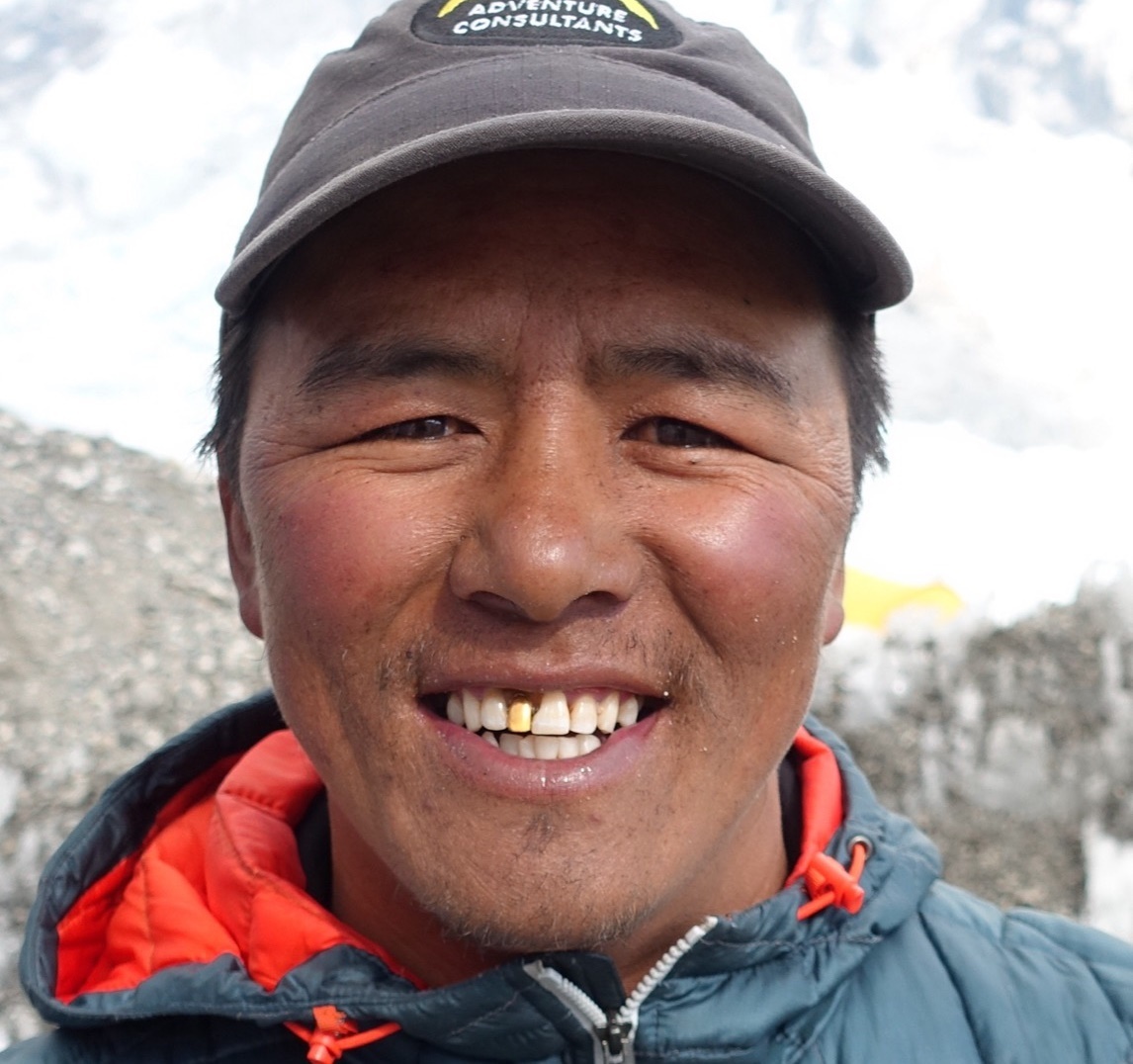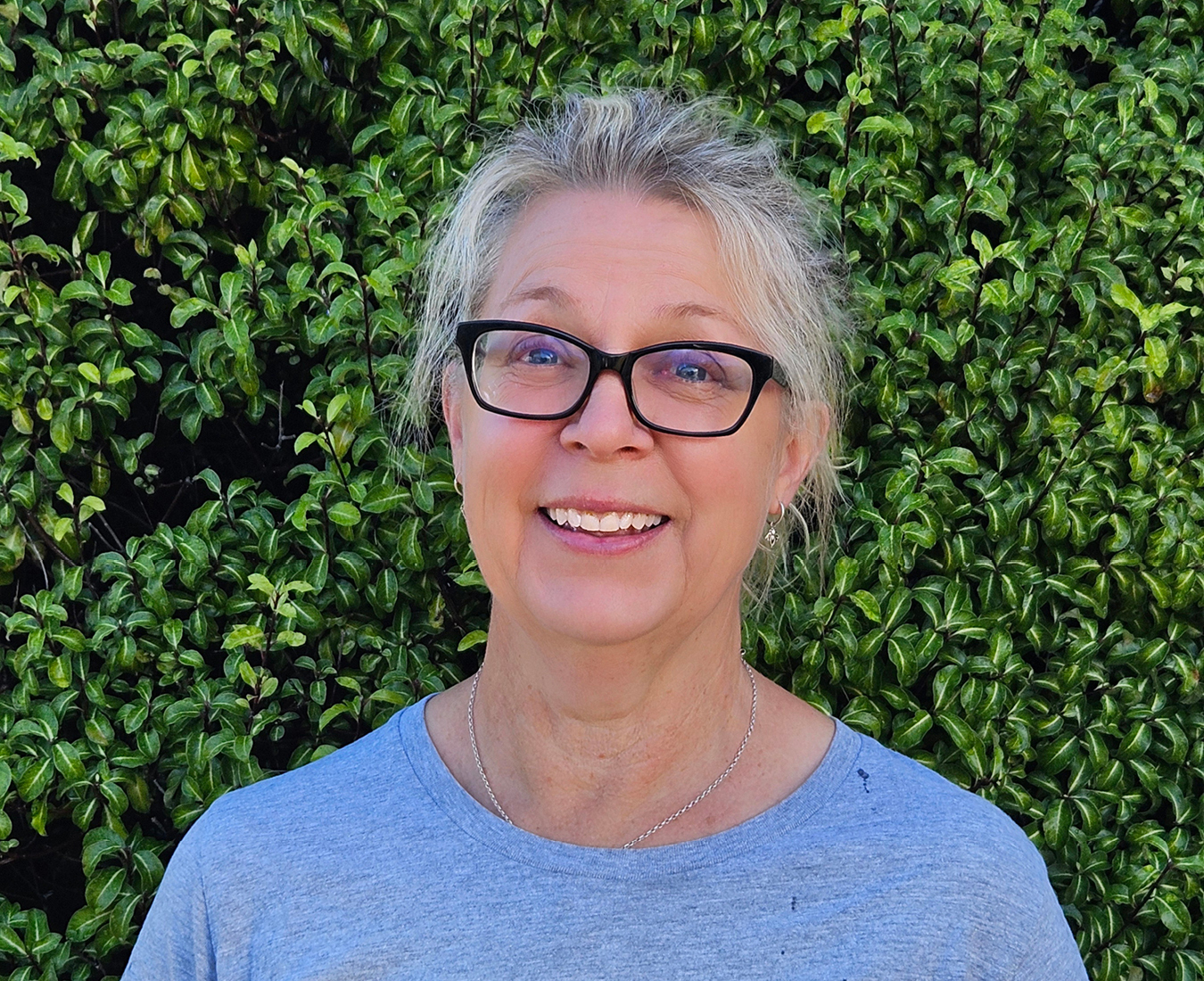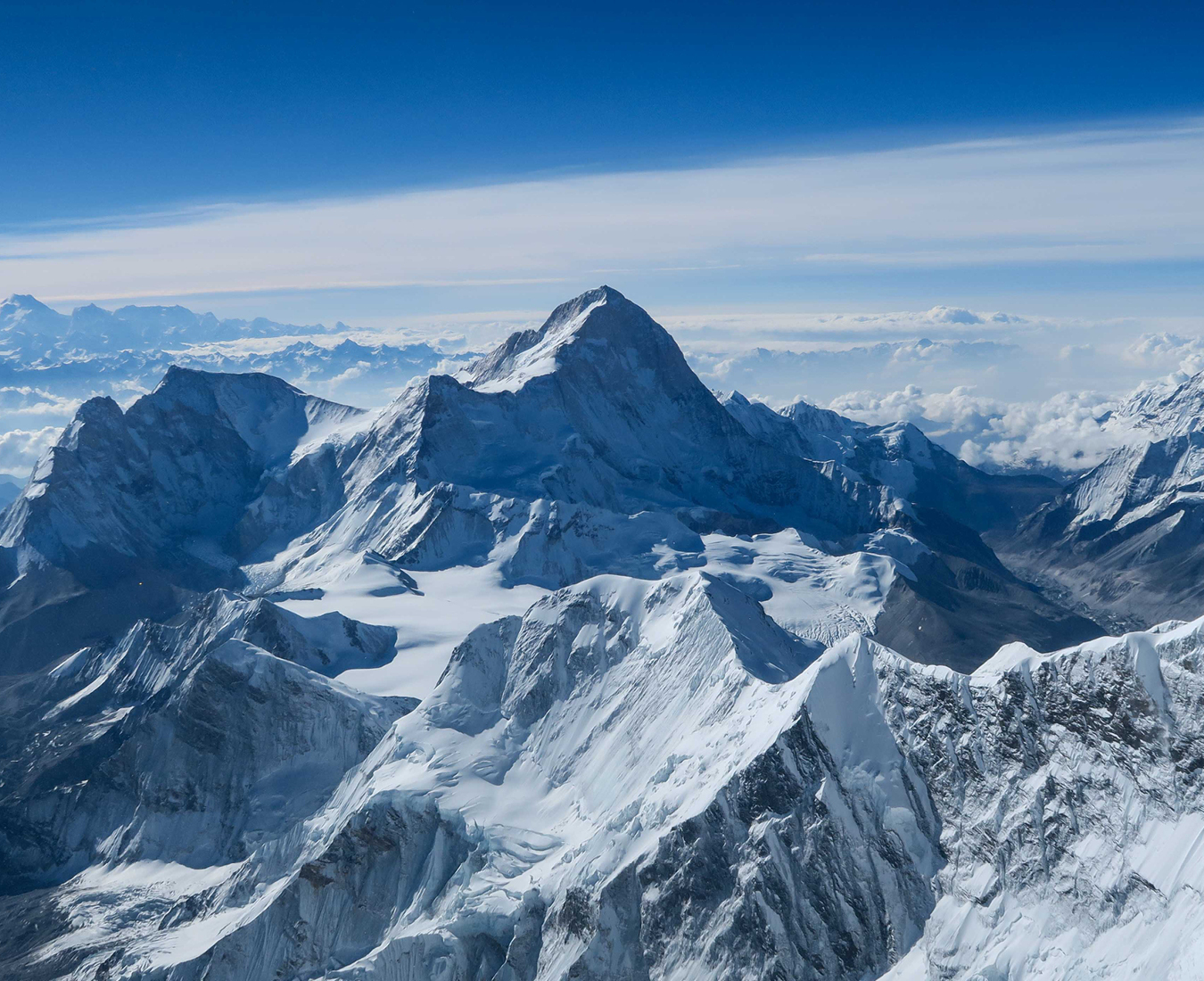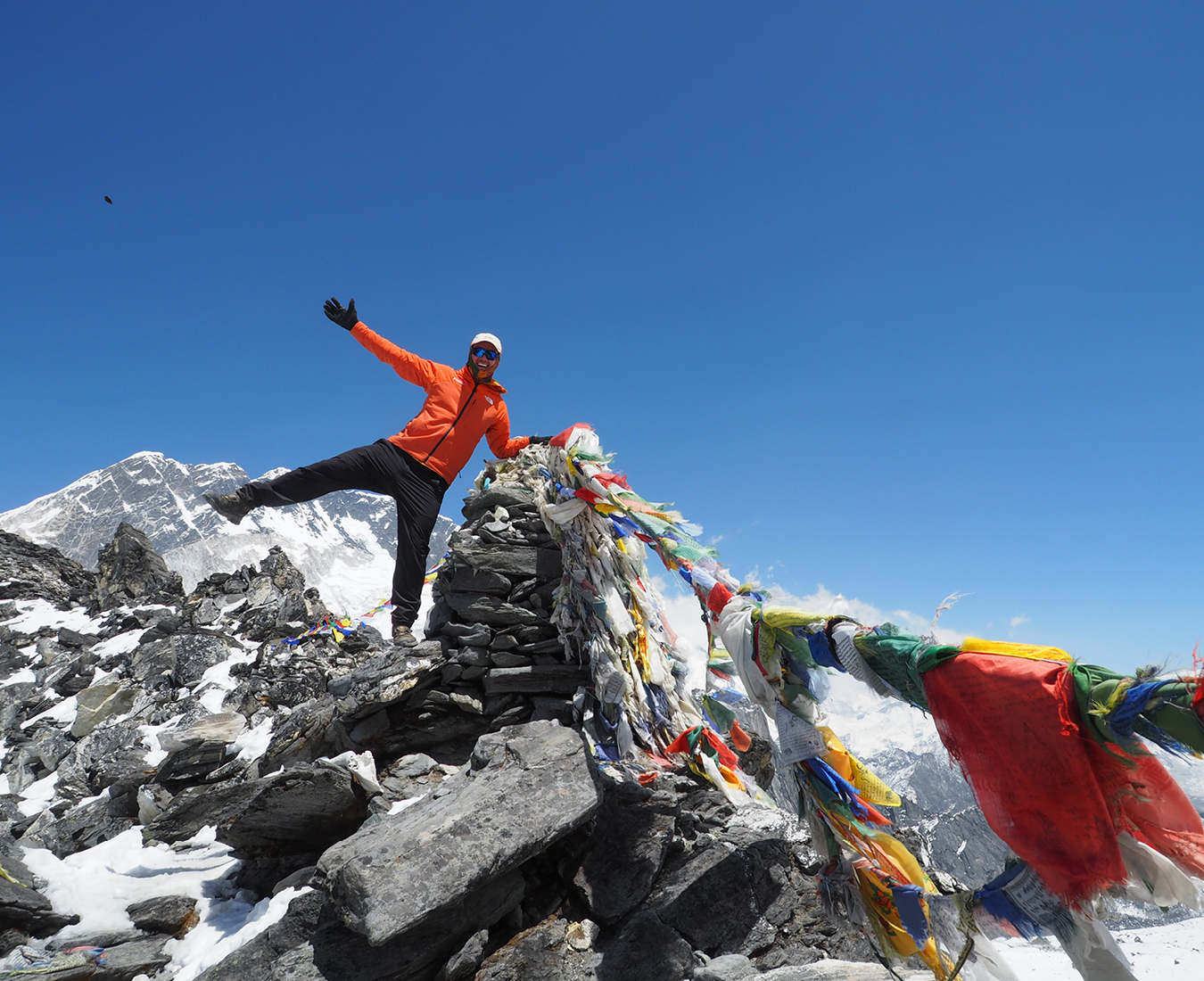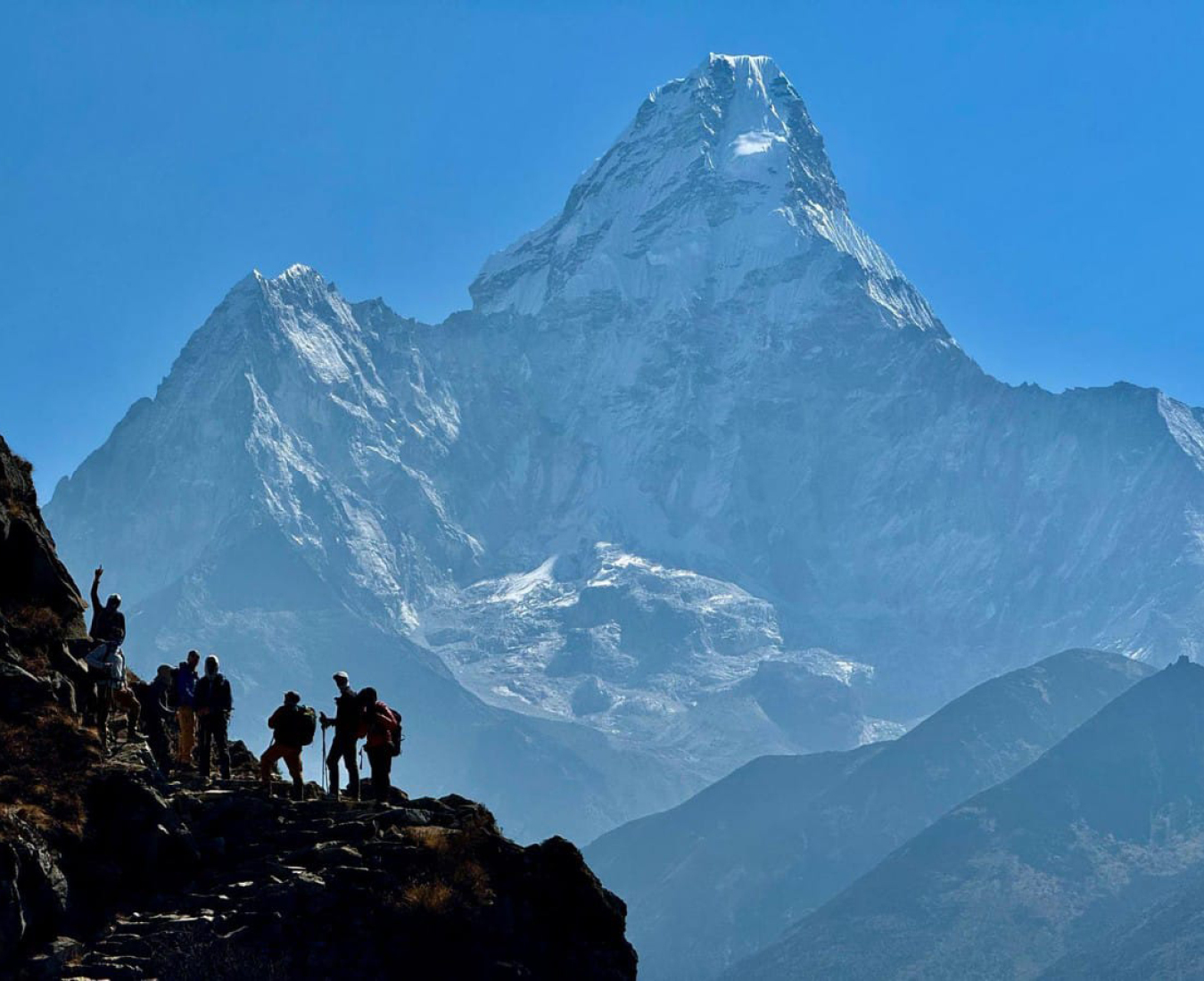The need for exceptional physical fitness cannot be over-emphasised. A regular, strenuous programme must be followed for many months to achieve the level of fitness required. We recommend a training programme tailored to mountaineering such as those from Uphill Athlete.
Cho Oyu is the world's sixth highest mountain and considered to be the most achievable of the fourteen 8,000m peaks.
As with all ascents at high altitude, the climbing is strenuous and a high standard of fitness is required, but as a peak to experience the thin air at 8,000m for the first time, Cho Oyu is ideal. Many of our expedition members use the experience gained here as a 'stepping stone' to Everest - or climb it as their ‘once only’ 8,000m goal.
Our Cho Oyu expedition itinerary has been tailored to include a visit to the city of Lhasa, the heart of Tibetan culture. Here we explore the Potala Palace and other cultural sites while acclimatising for the journey ahead. We then travel overland to the base of the mountain followed by a short walk to Base Camp.
The climbing route links features devoid of undue hazard with only a few short technical sections, yet the ascent path is direct, allowing climbers to gain altitude without covering a lot of distance.
- Climb with the most experienced expedition operator on the mountain
- Experience high-altitude climbing on the world’s sixth highest peak and prepare yourself for Everest
- Visit the vibrant cities of Kathmandu and Lhasa
Expedition Level
Expedition Level
Advanced
Elevation
Elevation
8,188m/26,863ft
Duration
Duration
45 days
Location
Location
Tibet, China
Arrive in Kathmandu, Nepal
Commence Tibet Travel Permit process
Gear checks and sightseeing in Kathmandu
Sightseeing in Kathmandu, finalise Tibet Travel Permit
Fly to Chengdu, China, overnight
| Fly to Lhasa, Tibet 3,650m/11,975ft |
Sightseeing in Lhasa
| Drive to Shigatse 3,800m/12,470ft |
Drive to Tingri 4,350m/14,270ft
| Rest day in Tingri |
Drive to Road End Base Camp 4,800m/15,750ft
Rest/acclimatisation at Road End
Trek to Valley Camp 5,300m/17,390ft
Trek to Base Camp 5,650m/18,500ft
Rest at Base Camp/organise equipment
Establish high camps and acclimatise
Summit Window
| Return to Base Camp |
Pack equipment
Trek back to road end and drive to Tingri
Drive to Nepalese border
Drive to Kathmandu
Depart from Kathmandu

Departures and Pricing
| Start/End | Departing from | Quantity | Pricing | Notes | Book |
|---|---|---|---|---|---|
| 3 Sept - 17 Oct 2024 | Kathmandu, Nepal via Lhasa, Tibet | Available | $48,500 USD $ | Book Now |
Looking for a specific date? Book a private expedition
PREPARE
You must be able to efficiently climb ice, snow and rock terrain, multiple days in a row. Climbers will ideally have a broad set of climbing skills from basic rock climbing to advanced cramponing on snow and ice and strong rope skills such as rappelling and rope ascending. You should be comfortable with camp craft and self-care at high altitude.
Prior ascents of multiple 6,000-7,000m peaks are preferred (such as Denali, Aconcagua, Peak Lenin, 6,000m peaks in Nepal, or the Ecuador volcanoes).

Adventure Consultants is renowned for the quality of its service and strategy applied to high altitude expedition climbing. Our reputation is attributed to meticulous planning and experienced logistics coordination. We have a philosophy of investing in every expedition to offer our climbers the best possible chance of success.
We employ strong and specialised Expedition leaders and Sherpa staff, who are some of the most pre-eminent in the industry. We pride ourselves on operating with small teams, the best back-up and support available. This includes nutritious and ample quantities of food, comfortable base camp facilities, reliable communications systems and the necessary medical back up.
Many of our expedition members come to us because they have seen us in action on a previous trip and decide to opt for our level of service and proven experience. Others return because they know we do our very best to make expeditions safe and successful.

The price of your trip includes the following:
- Chinese government royalty fees
- All expedition organisational requirements
- All climbing and trekking permits
- Land transport in Tibet and Nepal
- Flights to Chengdu and Lhasa from Kathmandu
- Accommodation ex Kathmandu
- All team equipment and five bottles of oxygen
- All expedition staff, including Western guides at 1:5 ratio and 1:1 Sherpa support
- All food after departing Kathmandu and before arriving back in Kathmandu
- All supplies necessary to make a safe and strong bid for the summit
- Medical kit
- Regular written and photo internet dispatches for families and friends to follow your progress
- dZi Foundation support for their "Revitalize a Village" program – likely to include support for a Nepalese child’s education for a year.

Experience tells us that a high degree of Sherpa support greatly increases the rate of success for our team members. Check out the Cho Oyu Trip Notes for more details on how these options might work for you!
- Personal Sherpa






